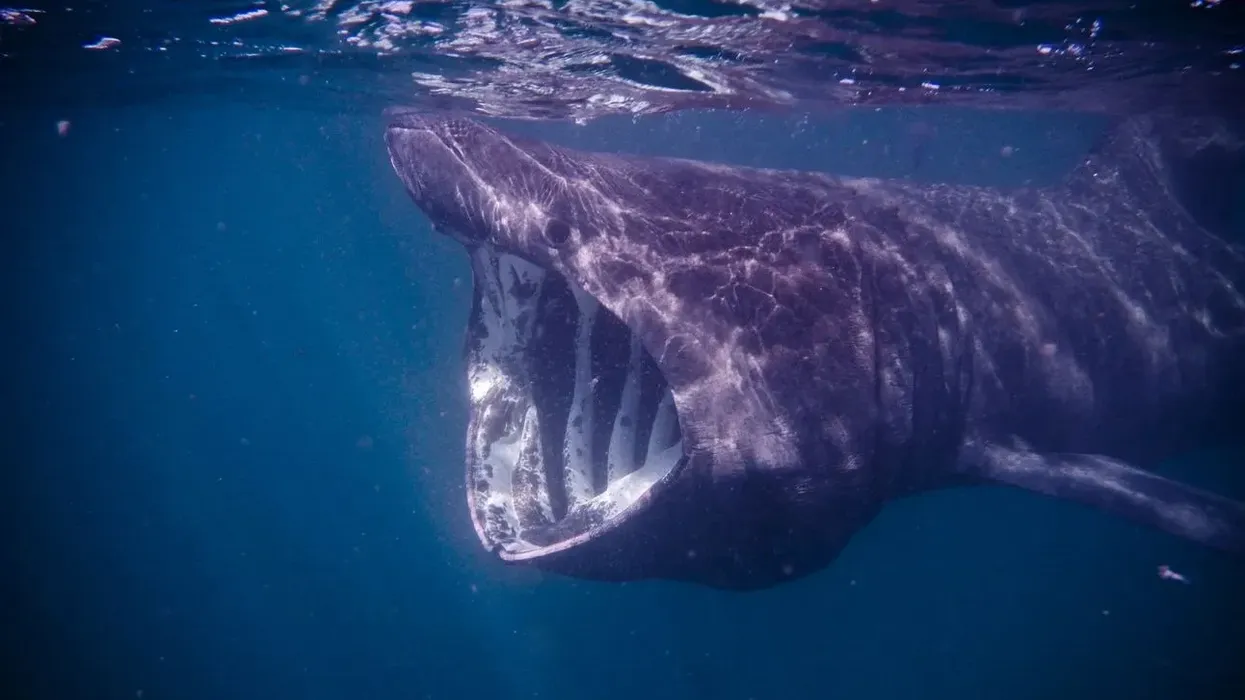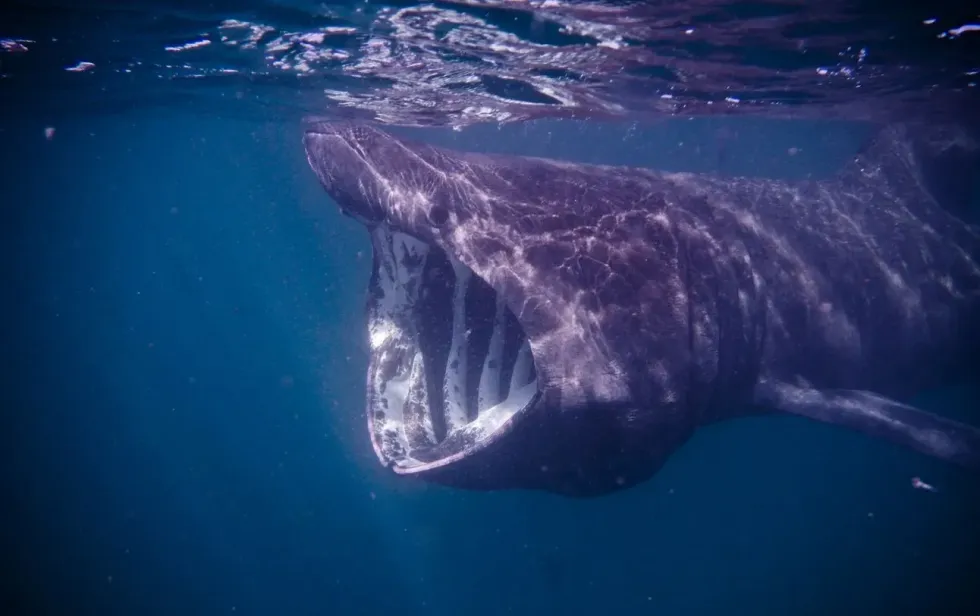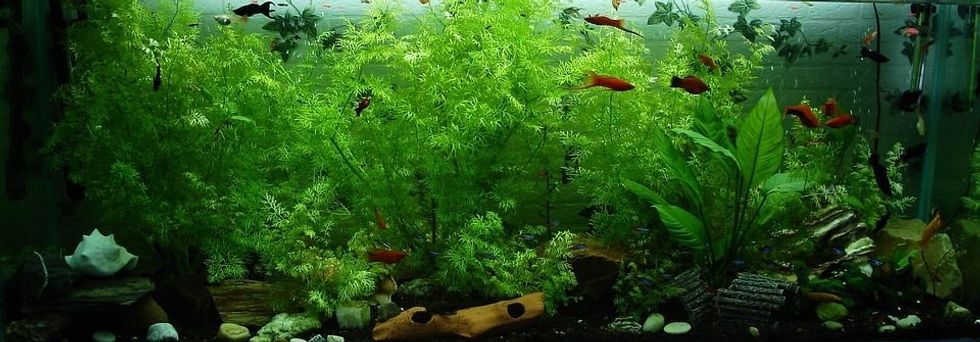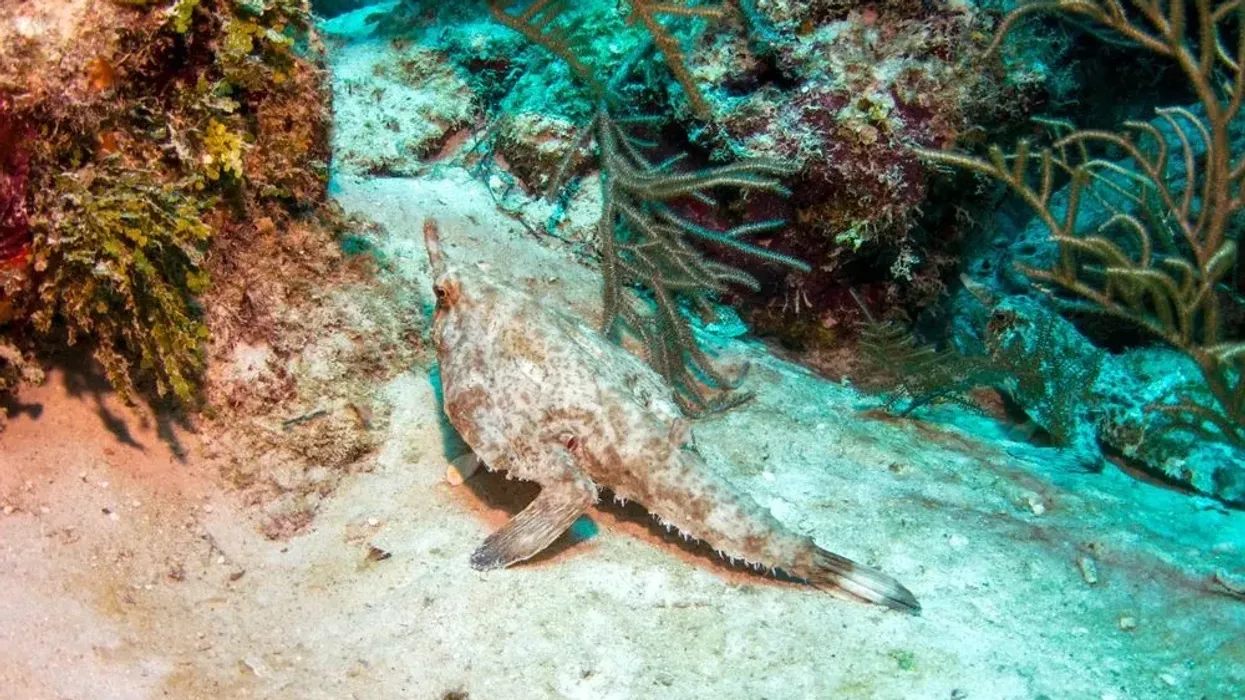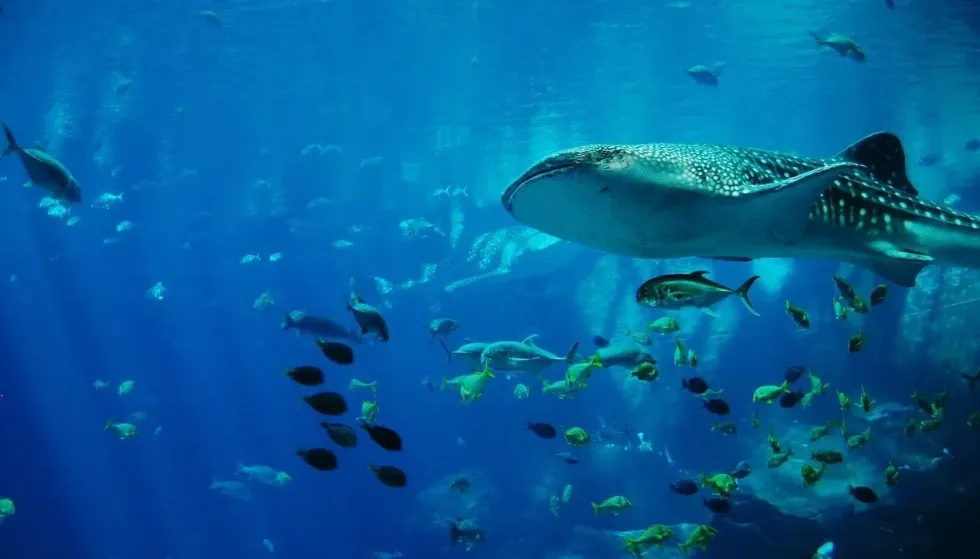The second-largest fish in the world, after the whale shark which is the largest fish in the world, the Basking Shark (Cetorhinus maximus) is also known as the megamouth shark. The technique of keeping their mouth open while moving helps them in filter-feeding planktons.
Their mouths are covered with hundreds of small teeth, which generally do not carry any significance.
They swim very near the surface, with their dorsal fin out of the water. Their genus name, Cetorhinus comes from the Greek word 'ketos' which means 'marine', and they belong to the order Lamniformes and family Cetorhinidae.
They are one of three plankton-eating sharks, alongside the whale shark.
They have highly developed gill rakers, which helps them in the feeding process. Although because of their huge size, people may get scared by their appearance, however, they are extremely passive by nature and do not pose any form of threat to humans.
If you are fascinated by Basking Sharks, then you may want to read the following amazing facts about them. If you want to learn more about different animals, you can read up on porbeagle shark and hammerhead shark.
Basking Shark Interesting Facts
What type of animal is a Basking Shark?
The Basking Shark is the second-largest shark found in the world, which belongs to the plankton-eating shark species.
What class of animal does a Basking Shark belong to?
Basking shark belongs to the Chondrichthyes class of animals.
How many Basking Sharks are there in the world?
The main threat of basking sharks is humans because of their fin being used in shark fin soup, liver oil, and meat, and they are often killed by boats or get caught in nets. They have been listed as an Endangered species by the International Union for Conservation of Nature or IUCN.
In the regions of Atlantic Canada, the current population is estimated to be around 10,000 animals of this species.
Where does a Basking Shark live?
A Basking Shark can be found in the water of the North and South Atlantic ocean, the Mediterranean sea, Southern Australia, New Zealand southwest coast of the United Kingdom, Sea of Japan, and the south of the Pacific ocean.
What is a Basking Shark's habitat?
Basking Sharks can be found in boreal or warm temperate waters. Continental shelf and occasionally brackish water, are their home grounds.
They generally tend to live in temperatures of 46.4-58.1 °F (8-14.5 °C), but there have been instances when they have been found to cross the much warmer waters at the equator. They are also near land, including bays with narrow openings. They migrate from one place to another, seasonally.
Who do Basking Sharks live with?
Basking sharks move alone, in pairs, or even in schools, comprising of as many as 100 members.
How long does a Basking Shark live?
Although the exact lifespan of a basking shark is unknown, according to experts, basking sharks can live up to 50 years.
How do they reproduce?
The mating season for Basking Sharks is generally considered to be the time of early summer, and by late summer, birthing occurs. These animals have a different process of reproduction, wherein the developing embryos have no placental connection and rely on the yolk sac.
The right ovary in a female Basking Shark, is the only one to function, although the reason behind this, is unknown. The gestation period may last as long as one to three years. They reach their sexual maturity at two to four years old.
What is their conservation status?
The Basking Sharks have been killed over the years for their fin, liver oil and meat, by human beings, as a result of which their number dropped drastically. Although several preservation plans have been drafted to promote effective conservation, they remain listed as an Endangered species by the International Union for Conservation of Nature or IUCN.
Basking Shark Fun Facts
What do Basking Sharks look like?
The Basking Shark (Cetorhinus maximus), which is the second-largest living shark, has a huge, large gray body with mottled skin, about the length of a double-decker bus. Their body color is darker on the upper side, and lighter underneath.
They have an enlarged jaw, which is white inside and has a black finger-like structure, known as black gill rakers. It prevents the food from escaping through the gills.
Their mouth is filled with rows of almost 100 small teeth, which are useless, other than in the time of birth.
On their back, they have a large triangular black dorsal fin. Basking Sharks also have five-gill slits on each side of their body, which is why they move slowly in the water.
How cute are they?
The Basking Shark is not at all cute. Although they are passive by nature, because of their large body and an enlarged mouth which seems to engulf almost everything that is near them, you might get scared at the first sight of them.
How do they communicate?
Basking Sharks don't have any organs to produce sound, and they move around in ghost-like silence. However, certain body behavior like swimming nose to tail in circles, as noticed by experts, has been studied and is thought to represent courtship.
How big is a Basking Shark?
The Basking Shark is the second-largest water animal in the world, after the whale shark. An adult Basking Shark can grow up to a length of 26 ft (7.9 m). The Basking Shark size may also differ from individual to individual with some reaching the length of 30-36 ft (9–11 m).
How fast can a Basking Shark swim?
Basking Sharks are slow swimmers because of their heavy size and weight. They use their whole body, and not just their tails, to move from side to side.
They can only move as fast as 3 mph (5 kmph). But although they can't move fast, they can jump almost entirely out of the water, a technique which according to experts is meant to dislodge parasites.
How much does a Basking Shark weigh?
Basking Sharks are huge creatures and the average weight of an adult basking shark is 11464 lb or 5200 kg. In 1851, in Canada, the largest ever animal of the species of this animal was recorded, which weighed almost 16 tons.
What are their male and female names of the species?
There are no such different names for the male and female genders of this species. The male shark is called a male Basking Shark, and female is called a female Basking Shark.
What would you call a baby Basking Shark?
Like all other baby sharks, baby Basking Sharks are also called pups.
What do they eat?
The diet of the Basking Shark generally includes zooplankton patches, smaller animals, and other invertebrates. They have been known to filter 450 tons of water per hour while swimming at a speed of 1.9 mph (3.1 kmph).
Are they dangerous?
Basking Sharks are not dangerous because they are passive by nature and they are slow-moving. They typically don't pose any threat to humans and have been known to show tolerant behavior towards boats and swimmers, but because of their huge body and thick skin, you might get easily scared at the first look of them.
Basking Shark attacks on humans are not known.
Would they make a good pet?
No, Basking Sharks would not make a good pet. Due to their gigantic size, they require a large area and are not suitable to be kept at home.
Moreover, the skin of basking sharks is also covered with tooth-like scales, known as dermal denticles, which are pointy and may cause scratches or cuts, when you come in contact with them.
Did you know...
The Basking Shark (Cetorhinus maximus) has been known to possess large livers, which make up almost 25% of their body mass.
The term 'basking sharks'; originated from their behavior of feeding near the surface of the water, which from a distance looks like a shark basking in the warmer water.
Cryptozoology is a study that deals with the animals that could have existed. After the death of a Basking Shark, the remains depict that of a sea monster. As a result, this monstrous animal has often been considered in skeptic mythological legends and folklore.
Basking Sharks have the smallest body weight to brain weight ratio, as compared to any other shark.
If you want to draw a Basking Shark, the first step is to draw an oval shape on a sheet of paper and an outline of its tail. Moving on, two more outlines for the head and the eyes need to be added, and finally the fin.
Then draw a few straight lines on the body and finally draw the teeth of the basking shark. Finally, join the outlines and add any improvisations to the picture for better effect.
The Basking Shark's mouth
The Basking Shark, the second largest fish in the world, has a huge mouth that extends past their small eye and is filled with small rows of teeth of 0.12-0.16 in long. They can open their mouth up to three feet wide.
They have a conical snout and large gill rakers, which help them to filter feed, which helps them to feed on planktons. They typically swim with their mouth open for 30-60 seconds, before closing their mouths and swallowing their food.
Basking Sharks and humans
Basking Sharks are not generally a threat to humans, because they are passive by nature and thus are unlike to eat a human. They have also been known to show tolerant behavior towards sailors or divers.
Although there has been no such instance of them killing humans, you must still always keep in mind their enormous size, and because of the 'dermal denticles', coming in close contact with them may cause injuries like cuts or scratches.
Here at Kidadl, we have carefully created lots of interesting family-friendly animal facts for everyone to discover! Learn more about some other fish including bullshark, or swai fish.
You can even occupy yourself at home by drawing one on our basking shark coloring pages.

